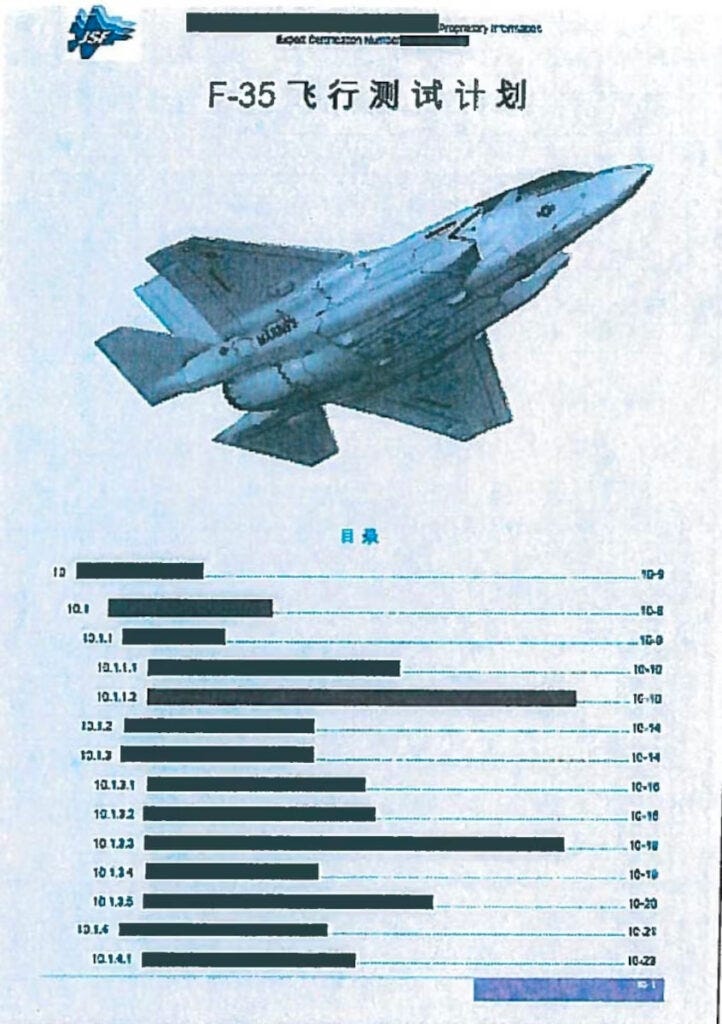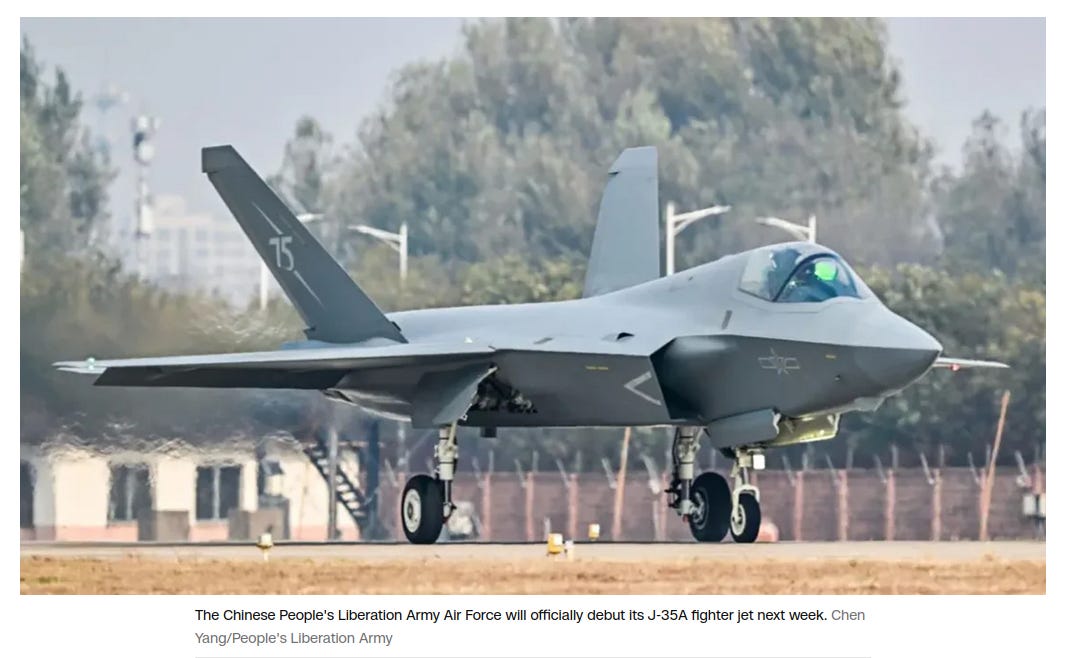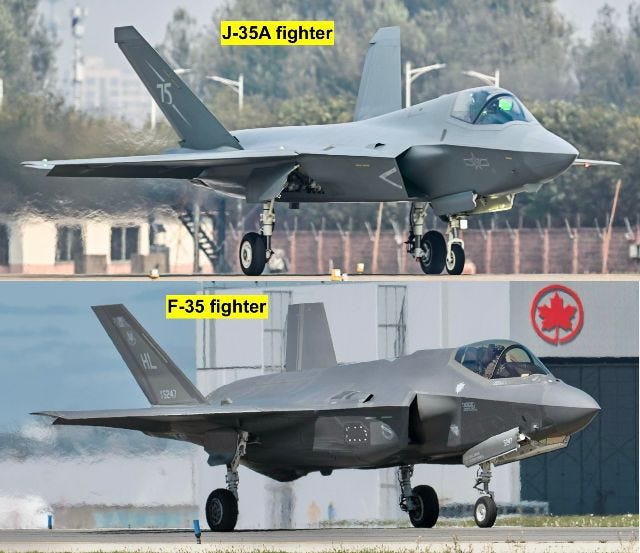Insider threats are uniquely perilous because they involve individuals who have already been granted trust and access by an organization. These threats bypass external security measures, giving bad actors a direct path to sensitive data and systems. When an insider decides to betray this trust—whether for financial gain, ideological motives, or under duress—the consequences can be devastating. Such breaches can inflict long-term damage on national security, business interests, or critical infrastructure, and one infamous case of this is the espionage related to the U.S. F-35 fighter jet.
This post will discuss how the Chinese were able to steal the plans for the F-35 and do so in what is considered to be the most expensive acts of espionage in human history.
The F-35 Espionage and China's Insider Network
The U.S. F-35, developed by Lockheed Martin, stands as one of the most advanced multi-role stealth fighters in the world. It integrates cutting-edge technologies, including radar-evading capabilities, advanced avionics, and sophisticated mission systems. However, a well-orchestrated series of cyber-attacks and insider threats allowed Chinese operatives to gain access to these classified design plans.
The operation centered around Su Bin, a Chinese businessman who infiltrated American defense contractors’ networks. Su coordinated with hackers to extract highly classified files, including stealth technology specifications and mission systems blueprints.
“Su admitted that he conspired with two persons in China from October 2008 to March 2014 to gain unauthorized access to protected computer networks in the United States – including computers belonging to the Boeing Company in Orange County, California – to obtain sensitive military information and to export that information illegally from the United States to China,” reads the Justice Department release. “
According to a report from Sandboxx, Su managed to orchestrate the theft of vast quantities of data. He sold this information to Chinese state-backed firms, enabling them to shortcut years of development and "stand easily on the giant’s shoulders." The scale of this espionage left a lasting impact, as the secrets stolen included everything from radar-absorbing materials to internal software designs, effectively leapfrogging Chinese military aviation capabilities
Su employed two hackers from the Chinese People’s Liberation Army, where they were able to steal over 630,000 documents from Boeing related to the C-17. However, they continued to infiltrate deeper into both the US government and defense contractors to steal other, even more sensitive vehicle documents and blueprints.
By 2009, the US government admitted that terabytes of data about the F-35 program had been accessed and stolen by the Chinese, the following image is a redacted page that Su created for his government.
According to Sandboxx, “In one 2011 e-mail entered into evidence, Su bragged to his Chinese contacts that the information they stole from the F-22 and F-35 programs would “allow us to rapidly catch up with U.S. levels … To stand easily on the giant’s shoulders.””
Keep in mind that for the US, the F-35 price tag to simply build is around $100 million, depending on the variant. And it decades and cost around $442 BILLION to develop the aircraft and will have a total cost of around $2 TRILLION by the end of its life cycle. All of which the Chinese have now skipped by this act of espionage.
In total Su and his cohorts were able to steal terabytes of documents, blueprints and information from various defense contractors and the US government over years, where he then translated and gave these documents to the Chinese, which, in his words, drastically sped up their ability to stay on the same military footing as the Americans.
The actual cost measured in dollars, time and effort that was lost by this theft is impossible to calculate, but this is arguably the largest series of intellectual property theft in human history.
Su Bin did eventually get caught however, and in 2016 plead guilty to a number of charges ranging from conspiracy, intellectual property theft.
The Unveiling of the J-35A: China's F-35 Doppelgänger
In November 2024, China showcased its newest carrier-capable stealth fighter, the J-35A, at a highly publicized airshow. As detailed in a Bulgarian Military report, the J-35A bears a striking resemblance to the U.S. F-35. Its external configuration, such as the diverterless supersonic inlets, stealthy airframe design, and internal weapons bay, mimics the F-35 almost point-for-point. Analysts have observed that even the stealth coatings and radar-absorbing features appear derived from American technology.
If you would like an in depth component by component comparison of the two aircraft, the Bulgarian military have outlined a great article which you can read here.
CNN highlights that this aircraft’s unveiling signifies a substantial leap for the Chinese air force, emphasizing that the J-35A could soon rival the American F-35 in performance and stealth capabilities. This rapid advancement would have been nearly impossible without access to the stolen F-35 designs. The integration of these elements into the J-35A suggests that China has effectively "skipped" major R&D phases, potentially saving billions of dollars and years of developmental lag
The Long-Term Strategic Impact on the U.S. Military
The theft of the F-35's secrets has significant strategic implications for the United States. The F-35 was developed to provide a decisive technological edge over adversaries, combining stealth with advanced networking and sensor fusion. With China now fielding a comparable jet, that edge has diminished. As a result, the U.S. and its allies face a new challenge: designing and deploying a next-generation fighter to regain air superiority. However, military aircraft development is time-consuming and expensive. Developing a replacement for the F-35 could take decades and require significant investment, during which time China could further refine and improve upon the stolen technology
Conclusion
This case serves as a stark reminder of the damage that insider threats can cause. Companies and government agencies must recognize that even the most robust external defenses can be circumvented from within. Protecting critical data requires comprehensive security measures, including advanced monitoring, employee vetting, and constant cybersecurity training. Insider threats can be difficult to detect and prevent, but failing to address these risks can be catastrophic.
I have written many times on the risks of insider threats, and stories such as this highlight why, as the cost of a single successful breach can have repercussions that last for decades and whos actual cost is incalcuable.
Training Resources:
For individuals looking for a hands on training that includes all of the above topics, Covert Access Team (covertaccessteam.com) provides training courses focused on physical penetration testing, lockpicking, bypassing techniques, social engineering and other essential skills.
Covert Access Training - 5 day hands on course designed to train individuals and groups to become Covert Entry Specialists
Physical Audit Training - 2 day course on how to setup and run a physical security audit
Elicitation Toolbox Course - 2 day course of that primarily focuses on elicitation and social engineering as critical aspects of Black Teaming
Counter Elicitation - 2 day course on how to recognize and prevent elicitation attempts, and safegaurd your secrets.
Cyber Bootcamp for Black Teams - 2 day course designed explicitly for physical penetration testers who need vital cyber skills to add to their toolbox.
Private Instruction - Focused learning & training based on your needs .
.










